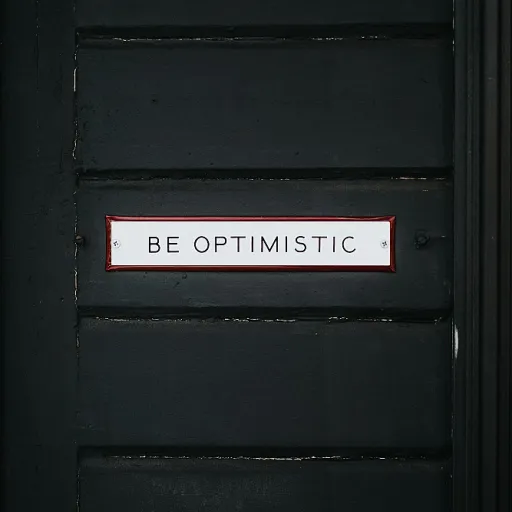
Understanding Horizontal Leadership
Grasping the Concept of a Level Playing Field in Leadership
In the evolving landscape of organizational structures, the shift from vertical to horizontal leadership is gaining momentum. At its core, horizontal leadership breaks down the traditional top-down hierarchy, encouraging leaders to share responsibilities and engage collaboratively with their teams. Unlike the conventional vertical leadership model, where decisions often flow from the top, this approach fosters a culture of shared decision-making where team members actively contribute to the organizational goals. In a typical organization, the vertical leadership style would see managers or executives holding the reigns of decision making, often leaving employees to execute tasks with little input in strategic directions. However, by embracing horizontal leadership, there's a significant shift towards empowering employees, enabling them to voice their insights and participate in shaping the path forward. This not only enhances employee engagement but also bolsters the collective problem-solving capabilities of the team. Organizations leaning towards this model find that it enhances collaboration and leads to better outcomes, thanks to the diverse perspectives brought to the table by cross-functional teams. It requires leaders to step into roles not just as traditional bosses but as coaches and facilitators of growth, supporting the learning and development of team members through targeted leadership development initiatives and skills training workshops. While some may argue that transitioning can be challenging, which will be explored further in the blog, the benefits are manifold. One can view a deeper dive into leadership styles and models, reflecting inspiring words from servant leaders, here. As modern organizations continue to evolve, adopting a horizontal approach could well be the most viable pathway to not just survive but thrive in a constantly changing environment.Benefits of Horizontal Leadership
Advantages of Adopting a Flat Leadership Approach
Embracing a horizontal leadership style in organizations offers numerous benefits, primarily enhancing collaboration and decision making processes. Unlike traditional vertical leadership models, where decisions flow from the top, a horizontal system promotes shared responsibility and empowers team members at all levels to contribute to the decision-making process. This fosters a culture where employee engagement and organizational commitment can thrive.
Horizontal leadership enhances communication and transparency within teams. By involving employees in discussions and decision making, organizations can harness diverse viewpoints, leading to innovative solutions and more effective problem solving. Employees are more likely to feel valued and appreciated, which can significantly contribute to improved morale and job satisfaction.
Moreover, this leadership model supports cross-functional teams, encouraging a blending of skills and perspectives from various departments. When departments work collaboratively, the organization's ability to adapt to change becomes remarkably stronger. As employees from various sectors combine their expertise, the organization can respond more nimbly to dynamic market conditions.
Finally, horizontal leadership often leads to efficient resource utilization. Since all team members are aligned toward common goals, redundancy and bottlenecks typically seen in vertical structures are reduced. In this streamlined environment, coaching and skills training become more effective, as development can be tailored to team needs rather than hierarchical requirements alone.
For a deeper understanding of how this approach operates, learn more about the essence of army servant leadership and its application in modern organizational structures.
Challenges in Implementing Horizontal Leadership
Obstacles to Implementing Horizontal Leadership
Adopting horizontal leadership within an organization is not without its challenges. As organizations traditionally operate under vertical leadership structures, any attempt to pivot requires a shift in mindset and a reorganization of existing frameworks. Here are some noteworthy challenges organizations might encounter:
- Cultural Resistance: Employees and leaders accustomed to a hierarchical, vertical model might resist significant changes to their roles and responsibilities. Without buy-in from all team members, the transition to horizontal leadership can be stunted.
- Clarity in Roles: Unlike vertical structures where roles are clearly delineated, horizontal leadership demands shared responsibility. This could lead to confusion if roles and responsibilities are not clearly defined.
- Effective Communication: Horizontal leadership emphasizes collaboration and shared decision-making. For this to be effective, strong communication skills training is essential. Inefficient communication can lead to misunderstandings and hinder the decision-making process.
- Resource Allocation: Transitioning to a horizontal leadership model may require new resources, such as executive coaching and skills training workshops. Limited resources can delay the process of organizational change and leadership development.
- Supporting Change: Leaders play a key role in fostering and maintaining this shift. This involves encouraging employee engagement through developing a culture of trust and adaptability. Leadership development initiatives and leadership styles must adapt to promote problem-solving and collaboration across cross-functional teams.
Despite the hurdles, with a thoughtful approach and by leveraging existing resources, organizations can surmount these challenges effectively, paving the way for successful horizontal leadership integration. For a deeper understanding of the role purpose-driven leadership plays in this transition, explore the essence of purpose-driven leadership.
Strategies for Cultivating Horizontal Leadership
Creating a Collaborative Culture
To implement horizontal leadership effectively, fostering a culture of collaboration is crucial within the organization. Encouraging open communication and promoting a shared responsibility among team members can enhance employee engagement. This involves building a leadership model where leaders and employees alike embrace a collective approach to problem solving and decision making. Organizational structures that support cross functional teams can aid this shift, transitioning from traditional vertical models to a more horizontal design. Workshops and skills training play a vital role in developing the leadership skills necessary for horizontal leadership, emphasizing facilitative techniques over directive approaches.Prioritizing Leadership Development
Investment in leadership development is necessary for cultivating horizontal pathways. Providing regular coaching and development opportunities allows leaders to shift their focus from control-oriented tactics to nurturing a culture of shared decision making. By equipping leaders with the skills required to guide rather than control, organizations can better align with the values of horizontal leadership. Team members benefit from learning development initiatives that teach not only practical leadership skills but also foster emotional intelligence and interpersonal dynamics crucial for effective horizontal interactions.Encouraging Open Feedback and Innovation
An environment that encourages open feedback allows teams to adapt and evolve their leadership style in response to the unique challenges they face. Horizontal leadership thrives when employees feel empowered to contribute ideas and challenge the status quo without fear of hierarchical backlash. Encouraging innovation through collaborative tools and resources helps sustain momentum and adaptability within teams. This approach not only enhances team performance but also enriches the organizational culture by embracing continuous improvement.Emphasizing Executive Support
Gaining the support of executive levels is essential in making horizontal leadership a reality. Leadership at the top must model the values of collaboration and shared responsibility for these to trickle down throughout the organization. Executive coaching tailored to horizontal leadership principles can help leaders at all levels adapt to these new dynamics. In summary, the transition to horizontal leadership involves deliberate strategies in culture, leadership development, feedback mechanisms, and executive positioning. By addressing these areas, organizations can pave the way for a more cohesive and innovative workplace that embraces shared leadership.Case Studies of Successful Horizontal Leadership
Real-Life Examples of Effective Horizontal Leadership
In recent years, several organizations have successfully adopted horizontal leadership, proving its viability in modern corporate landscapes. By embracing a leadership style that leverages shared responsibility and enhanced employee engagement, these organizations have paved the way for others to reconsider traditional vertical structures.
One multinational corporation, for instance, restructured their organizational model to incorporate more cross-functional teams. This change enabled a culture of collaboration and eased decision making processes. The results were evident as the employees felt more empowered, leading to increased innovation and problem solving capabilities. The company also invested in leadership development programs to equip team members with the necessary leadership skills for succeeding in a horizontal environment.
Another company known for its commitment to employee engagement utilized executive coaching and skills training workshops to foster horizontal leadership within their teams. They recognized that aligning organizational culture with the principles of shared leadership could increase team productivity and satisfaction. As leaders shared responsibility, decision making became more inclusive, resulting in a dynamic and flexible organizational structure.
An emerging trend is seen in tech startups, where horizontal leadership is especially prevalent. These startups prioritize open communication channels and a flat hierarchy, allowing rapid change and adaptation to market demands. Instead of relying solely on vertical leadership, they promote leadership development among employees, encouraging every individual to take initiative.
Collectively, these real-world examples highlight the effectiveness of horizontal leadership in navigating the complexities of modern organizations. It's evident that by reshaping traditional leadership models to incorporate more horizontal elements, companies can create a thriving environment conducive to innovation, collaboration, and sustained growth.












